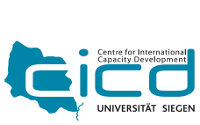About Us
From the start, in a former project named VirtualSign, we have investigated the bidirectional translation between Portuguese Sign Language and written Portuguese. It became clear that the ability of technological solutions to empower deaf people with effective communication facilities could be improved to address the translation between different national sign languages. The VirtualSign project observations led us to adapt the VirtualSign translator to European sign languages. This work was performed under the I-ACE project, a strategic partnership co-funded by the Erasmus+ program. A demo of the VirtualSign translator can be found here.
Under the frame of VirtualSign and I-ACE projects and the results that were transferred to the society by these initiatives, we have been discussing communication issues with the deaf communities from several European countries and Brazil. This extensive contact with the European deaf communities gave us a good perception of their reality.
Deaf students experience difficulties in communicating with non-deaf as well as with other deaf students from different nationalities due to the different languages used by both. Communication among deaf students through written text is not effective since deaf people are used to visual sign languages and not to oral languages being expressed orally or in written. Providing channels for the communication and access to digital educational materials in a common sign language that all deaf students can understand is critical to facilitate the access of deaf students to education and promote their inclusion in the globalized society. All sign languages are different despite sharing common characteristics. A key difference is that in the world of oral languages, English has become a de facto lingua franca which enables global mobility and active citizenship worldwide to all. Deaf communities may have similar opportunities if they have access to a globalized sign language. This sign language, named International Sign, exists but it is not commonly used except in big international congresses and global events, like the World Federation of the Deaf and COINES.
Our previous experience with the international deaf community clearly showed that deaf communities are very much closed in themselves. Except for a few cases, deaf students rarely contact other deaf and even less non-deaf people outside their family and close friends. This castrating isolation they are forced to live in is one of the main causes for the very frequent mental diseases and depression observed in young deaf students. Raising awareness and promoting a preliminary contact with International Sign, at an early age in a school environment might be a significant contribution to open the global world of education and mobility to the deaf community. This is our purpose. InSign will transfer the research results from these former projects to the international scene.


